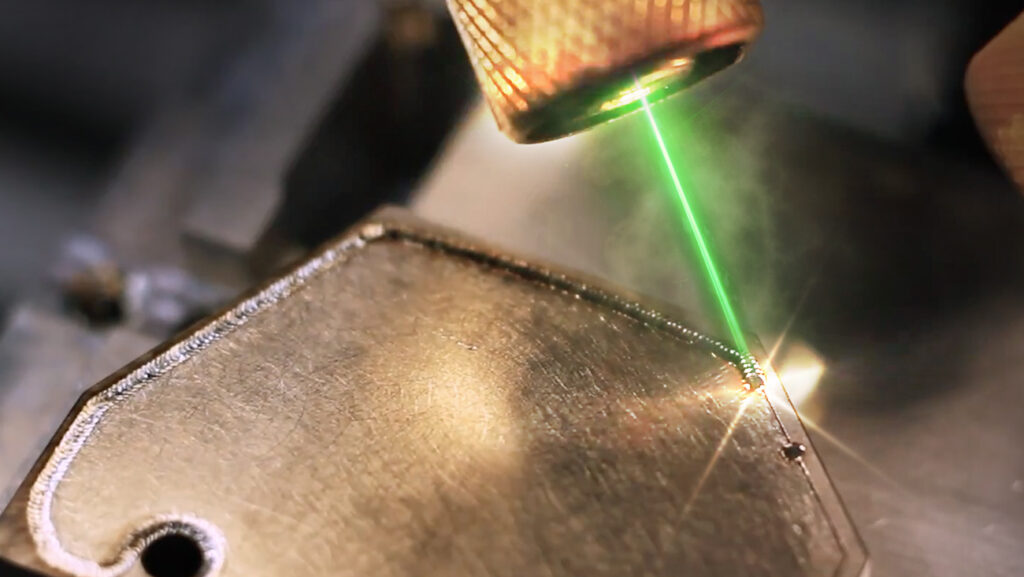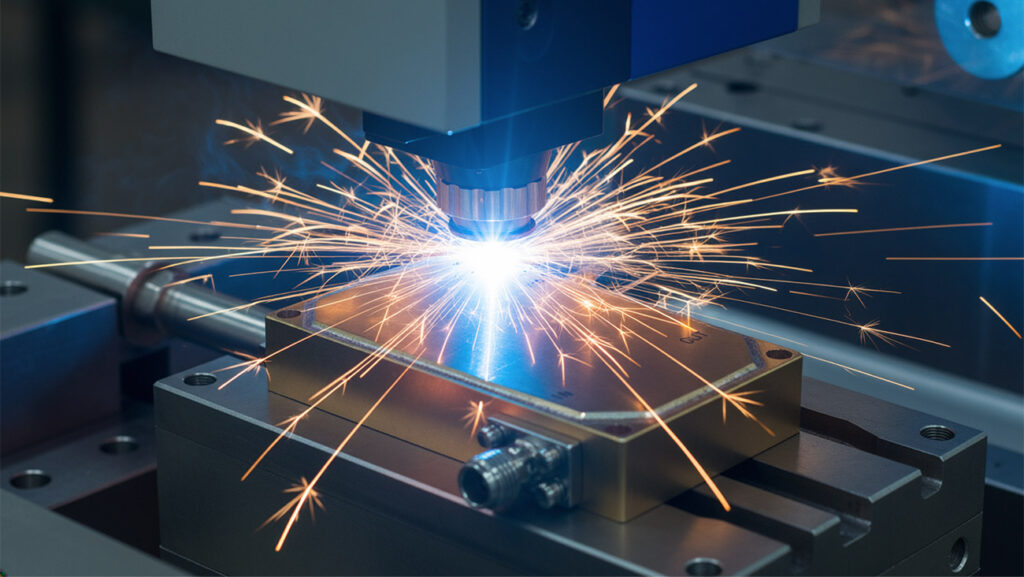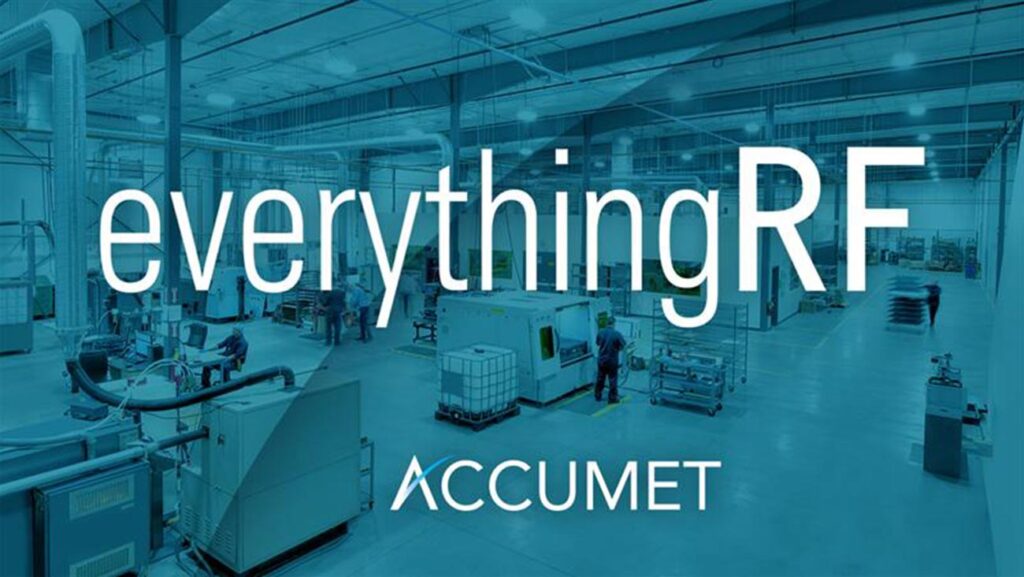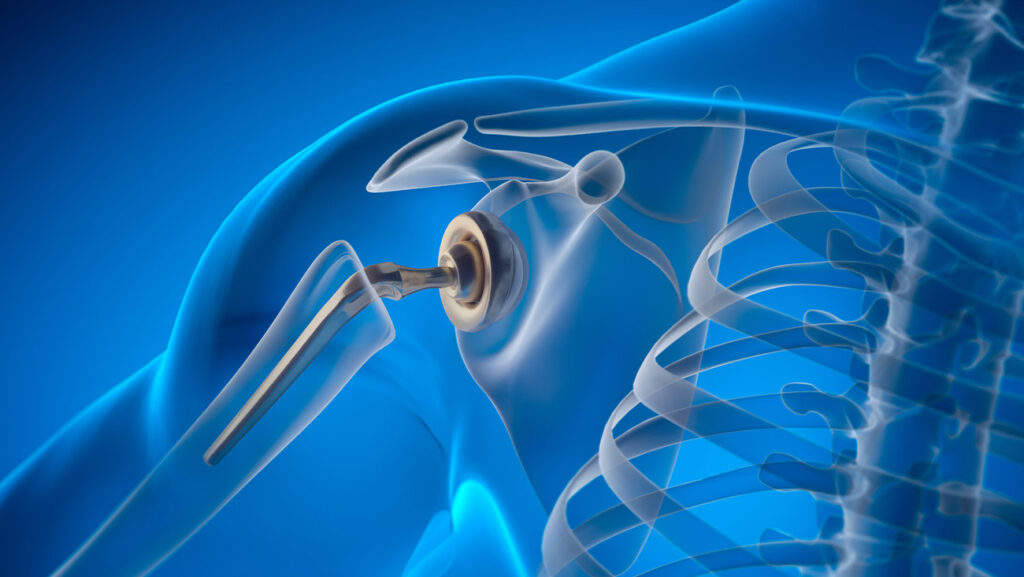Keys to Perfecting Laser Welded Hermetic Seals – Part 1
Posted on June 11, 2019 in Blogs

Hermetic seals are used throughout the high-tech industry to provide maximum packaged
protection from environmental elements that can reduce the reliability and required lifetime of
critical electronics. Laser welded (or laser fusion welded) hermetic seals are the certified
method governed by many military and aerospace quality and reliability standards (MIL-STDs).
Devices designed to (or near to) these standards, include those found in the RF/microwave,
space, aerospace, military, high-power, high-frequency, science/research, and medical device
markets, where maintaining a near absolute barrier between the electronics and outside
conditions is necessary. There are many types of hermetic seals and packaging materials a
designer can choose from. Fusion welding hermetic seals with lasers has become the leading
solution for applications that require complex, mixed material, and/or precise and fast sealing.
Though fusion welding can be performed by a variety of means, laser fusion welding your
hermetic seals offers the most confidence and a variety of benefits. These include: tighter
tolerances, three different joint-type options, and flexibility that can enable new geometries and
material use. This blog provides the first 3 of 5 five keys to consider when
hermetic sealing via laser welding.
I. Know Your Package and Plating
Material Options
As laser welding is typically an autogenous welding process, only the materials of the lid and
enclosure are part of the weld. This means that the exact material matchup of the lid/enclosure
materials is critical, along with any intermetallics, cooling rate matchups, reflectivity and plating.
Laser welding also has a small heat affected zone (HAZ) and imparts minimal heat to the
material, so cooling tends to happen quickly. This can be a factor with some types of metals and
combinations of metals, as it could impact weld quality and yields. So, gaining a basic
understanding of various material properties and their interaction with laser energy is an
important first step in ensuring quality seals.
Most metals, and even mixed metals can be laser welded. Some alloys and metal combinations
are not compatible with laser welding without filler materials, and some combinations and alloys
cannot be laser welded reliably for hermetic seals. The exact geometries, materials, and weld
type determine the exact amount of laser energy and exposure necessary to produce reliable
welds. Accumet has assembled the most common weldable materials in a table which offers a
list of advantages and disadvantages of each. It’s available in our Tech Brief “ 5 Keys to
Perfecting Laser Welded Hermetic Seals. The Tech Brief can be downloaded here ››
A. Plating Considerations
Plating of electronic components and metals used for hermetic enclosures is common when
corrosion, solderability, conductivity, thermal management, and other process concerns exist.
This means that a laser welding process for hermetic sealing may need to be performed on one
or more plated surfaces. Nickel and gold are the most common platings for electronics, though
tin, silver, and copper plating are also used.
Nickel Plating
Nickel plating is either applied with an electrolytic (i.e. electroplating) or electroless process. But
when there’s a choice, designers should choose electrolytic over electroless. The reason is an
electroless nickel plating process has a tendency to create intermetallic changes, porosity, and
cracking during laser welding due to the phosphorus content added during the plating process.
Gold Plating
In addition to electrolytic plated nickel, gold plating (common when working with Kovar) is an
acceptable preparation step. (Review Table 1 for additional details.) Gold plated mild steel
however, is not. It can form intermetallic segregation within the laser weld. This is especially
problematic for hermetic seals.
Tin and Zinc Plating
While there are developing methods that allow for effective outgassing of tin and zinc vapor, it’s
best to avoid these materials when plating, as they will vaporize during laser welding. This can
lead to unwanted chemical reactions and impact the quality of your laser welded seals.
II. Understand Your Laser Options
There are three main types of laser technologies used for creating fusion welded hermetic
seals: CO 2 , diode, and Nd: YAG. Lasers can be used in either continuous wave (CW) or pulsed
modes. Also, there are various methods of beam delivery, including fiberoptic, of which a variety
of crystals or diodes, including Nd:YAG, can be used to generate the laser. An important note is
that each type of laser, beam delivery, and laser welding machine design exhibits different
properties and performance based on laser frequency, power, duty cycle, and material
properties.
For many designers, the exact type of laser being used for the weld is only a concern as far as
material choices. Most designers won’t have a range of laser technologies to choose in-house,
and will instead rely on a laser service job shop with technicians who are well-experienced and
skilled in state-of-the-art laser technologies. These technicians are able to provide more detailed
insights into the exact laser type, machine, and process necessary to provide high-quality welds
for a designer’s specific application. As every hermetic enclosure has its own unique stackup of
considerations, working with a well-established laser service organization with skilled
technicians is a sound decision, from a cost and yield perspective.
III. Decide on Your Joint Type
There are three main joint types to consider when laser welding; butt, lap, and fillet joints.
Common amongst laser weld joints are the tolerance and spacing constraints between the
joints. Generally, the tolerances for hermetic sealing is very tight. As a laser beam kerf width is
typically on the order of a fraction of a millimeter, or a hundredth of an inch, and the weld puddle
is proportionally narrow, to meet quality and reliability standards, a high-power laser seal weld is
optimal for hermetic seals. An early consideration to keep in mind, however, is that the weld
puddle during laser welding needs to be about 85% to 90% wider then the kerf.
A. Butt Joint
A butt joint is where two workpieces are physically touching (“butted” together) with a very
narrow gap that is typically on the order of one hundred microns. Tolerances of the gap,
material thickness, and edges must be very small to ensure a smooth bead along the seam.
Given the sub-millimeter beam width of a laser weld, butt joint gaps must be substantially less
than the beam width, and the lip of the cover must be larger than the beam width. However, a
technique known as beam wobble can be used to loosen this constraint somewhat. A general
guideline for butt joints is that the gap between the lid and enclosure cannot exceed 10% of the
thinnest material thickness or of the penetration depth, whichever is less.
Key Characteristics
• No filler material needed, and less material at the joint
• Faster laser speeds or less laser power can be used
• Small heat affected zone (HAZ) with minimal heating and distortion
• No step or fixturing requirements
• Does require tight tolerances of lip and edges and precise fit-up can be challenging
• Weld strength is related to weld depth
• Thinner materials increase tolerance constraints
A laser welded butt joint is considered extremely efficient, as the energy from the laser is solely
focused along the joint line and can be done in a single pass. Mechanically, butt welds are
reasonably strong and can be made to a minimum strength of the weld materials. This type of
weld is used with larger enclosures and assemblies, and generally doesn’t require any
additional tooling to hold the enclosure lid in place.
B. Lap Joint
A lap weld is performed when a relatively thin layer of the material overlaps the other side of the
joint, and requires the weld to be done through the top thin layer of material. This method is
commonly used when welding sheet materials, or a thin sheet to an enclosure. The tolerances
for this type of weld are less stringent than for a butt weld, though tooling is required to ensure
that the overlap is aligned.
Key Characteristics
• Larger process window than butt joint, less stringent lip tolerances
• Requires fixturing and lineup
• Greater laser energy required or slower processing with more heating and potential distortion
• Less efficient than butt joint
• Limits on the thickness of the top layer material based on laser power
• Weld strength derived from weld thickness at interference
A general guideline suggests that the gap must not exceed 20% of the thinnest material
thickness or of the penetration depth, whichever is less. As a lap weld requires penetration of
the top material, greater laser energies are required to first penetrate and then weld the joint
beneath the top material. There is also a limit to the thickness of the top layer of a lap weld, and
this constraint depends on the laser energy and penetration power of the laser for a given top
layer material.
C. Fillet Joint
A fillet joint is similar to a butt joint, but performed on parts butted at a 90° angle. The joint is done at the edge of where the material meets at one side of the joint, with the laser energy coming at an angle or from top-down. A fillet joint is almost as efficient, considering laser power to weld strength, as a butt joint. A fillet joint is commonly used in electronic sealing, and generally requires tooling to ensure the material meets at an appropriate angle and with adequate tolerances. Generally, a fillet joint gap can be reliably performed as long as the gap doesn’t exceed 15% of the thinnest material thickness or penetration depth, whichever is less.
Key Characteristics
• Efficient laser power and exposure time to weld joint strength
• More forgiving fit-up than butt joint, but less than lap joint
• Requires angled laser or fixtured parts at an angle
Choosing an experienced laser service partner with a solid track record for hermetic sealing, is
also a key decision in meeting and exceeding customer expectations for the reliability and
longevity of your electronics.
Next steps:
To learn even more ways to Perfect Laser Welded Hermetic Seals check out the second
part of this Blog series and download our new tech brief “Keys to Perfecting Laser Welded Hermetic
Seals” ››



